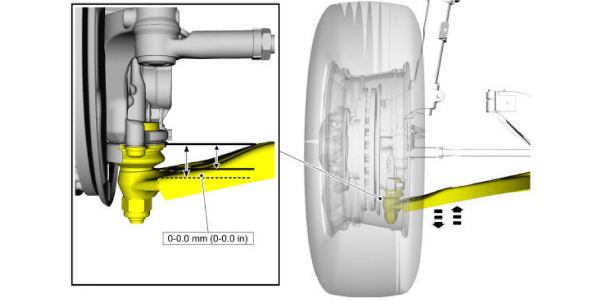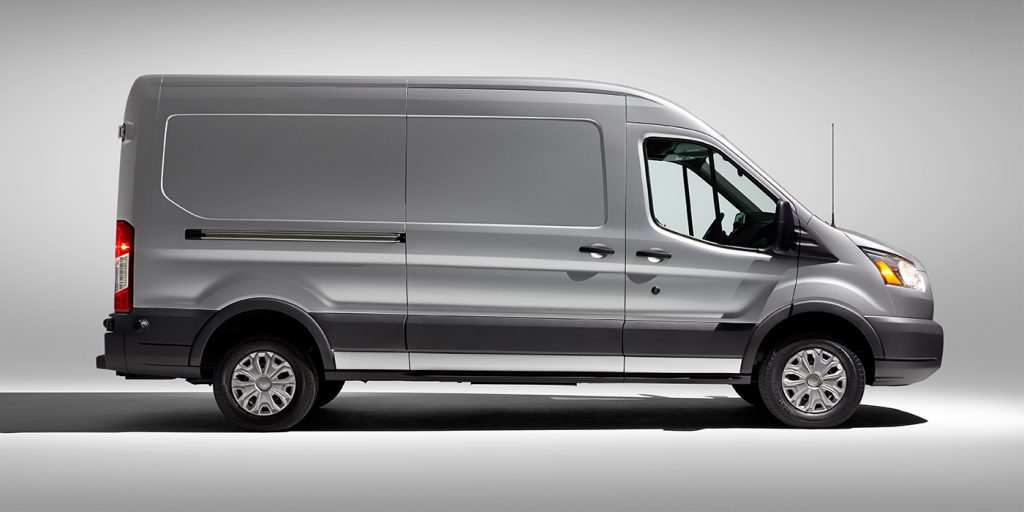Models: 2015 – Current
In 2015, Ford replaced the Econoline with a van that was designed for both Europe and North America called the Transit. This van is designed for fleets who will put on a lot of miles in a short amount of time. The Transit comes in 150, 250 and 350 sub-models. There is also a model with a dually rear axle. The alignment for this vehicle is simple with the only built-in adjustment being front toe. But, the camber and caster angles can be used to diagnose other problems.
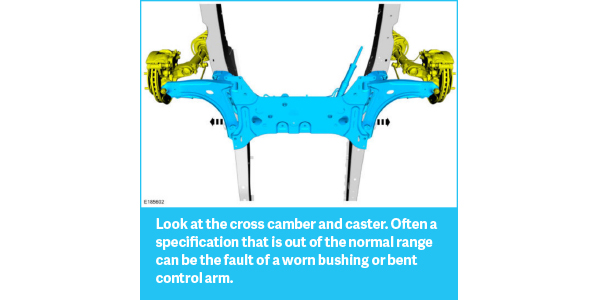
Top Tips:
Perform a complete inspection before the alignment to look for damage.
Since most Transits are used for hauling cargo and tools, keep this in mind if you are trying to solve an alignment or tire issue. An overloaded Transit will have significant changes to the ride height and front alignment angles.
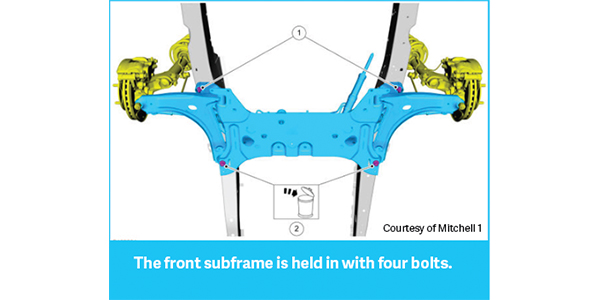
The Transit is a platform with multiple variations for the van, bus and even roof height. When you are looking for the correct specifications, make sure you have the right model and even powertrain. Even the electric version has different front camber and caster specifications.
Front Suspension
The front suspension of the Transit uses struts. There is no practical way to adjust the camber. In the service information, they recommend shifting the front subframe. The procedure requires loosening four bolts that secure the subframe. These bolts are torque-to-yield and will require replacement.

Always look at the cross-camber measurements before trying to shift the subframe. If you are trying to reduce the camber on one side, you will be adding that camber to the other side. If the camber or even caster is off on just one side, look at the control arms and strut rod for damage. Also, look at the ride height. If one side is lower, it can change the camber.
Rear Suspension
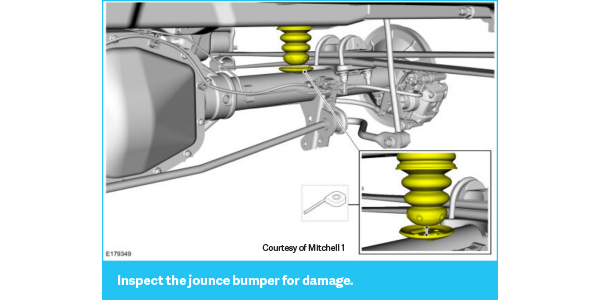
The rear suspension uses a live axle with leaf springs. No adjustment is possible, but measuring the thrust angle and setback should be performed. To measure the rear ride height, measure the distance between the jounce bumper and the striker cup. If you see “helper” springs, ask the owner if he has had any issues with sagging in the rear. If the owner regularly overloads his van, it can impact the life of the wheel bearings.
After The Alignment
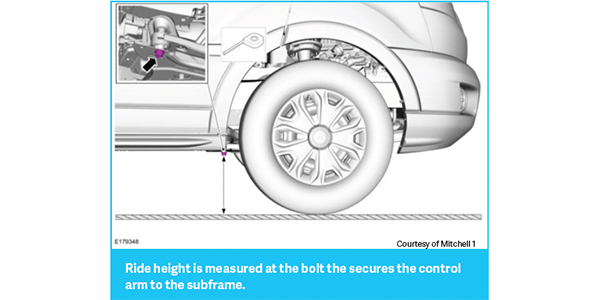
The Transit can be ordered with an optional lane-keeping system that alerts the driver if he drifts out of his lane. Some models have a steering wheel shaker that alerts the driver. If the camera is disturbed from its mount behind the windshield, it will need to be calibrated. The Steering Angle Sensor Module (SASM) is self-calibrating. But, if significant repairs were performed to the steering column or ABS system, there is a calibration protocol that will require a scan tool.
